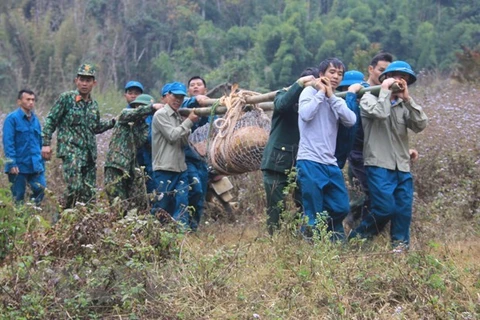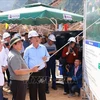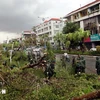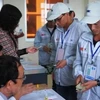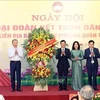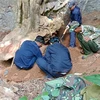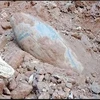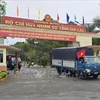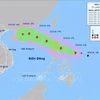Hanoi (VNA) - As one of countries most affected by unexploded ordnance (UXO) left over from the war, Vietnam has paid special attention to the clearance of bombs and mines in order to free land to serve socio-economic development and at the same time promote activities to support and help UXO victims.
The statement was made by Colonel Nguyen Hanh Phuc, Deputy Director of the Vietnam National Mine Action Centre (VNMAC), at a press conference providing information about the settlement of bomb and mine consequences in Vietnam in Hanoi on April 4.
It is estimated that there are still about 800,000 tonnes of bombs and mines left over from the war in Vietnam, with the contaminated and suspectedly-contaminated area of about 6.1 million hectares, accounting for 18.31% of the country’s total area.
These unexploded bombs and mines are hidden underground in all 63 provinces and cities, with many concentrated in the central, Central Highlands and southeastern regions.
According to Phuc, it will take much time and huge resources to clear the contaminated areas to bring about a safe life for people and contribute to the nation’s sustainable development.
This year, VNMAC is collecting data to make a report reviewing the implementation of the national action programme on settlement of post-war bomb and mine consequences in the 2010-2025 period, and prepare a programme for 2025-2045, with a vision to 2050.
The centre is also building a mechanism on calling for domestic and foreign donations for this work and plans to complete and submit for approval a national strategy on education on risks of bomb and mine-related accidents.
Pham Thi Hai Ha, Deputy Director General of the Department of Social Assistance under the Ministry of Labour, Invalids and Social Affairs, said ministries, agencies and localities have actively rolled out policies to provide social assistance for UXO victims to reintegrate into the community, and educate people on UXO accident prevention.
Essential services for the victims include orthopedics, rehabilitation, counseling, psychotherapy, physical therapy, social work, vocational training, employment services, and social welfare policies, she added./.
The statement was made by Colonel Nguyen Hanh Phuc, Deputy Director of the Vietnam National Mine Action Centre (VNMAC), at a press conference providing information about the settlement of bomb and mine consequences in Vietnam in Hanoi on April 4.
It is estimated that there are still about 800,000 tonnes of bombs and mines left over from the war in Vietnam, with the contaminated and suspectedly-contaminated area of about 6.1 million hectares, accounting for 18.31% of the country’s total area.
These unexploded bombs and mines are hidden underground in all 63 provinces and cities, with many concentrated in the central, Central Highlands and southeastern regions.
According to Phuc, it will take much time and huge resources to clear the contaminated areas to bring about a safe life for people and contribute to the nation’s sustainable development.
This year, VNMAC is collecting data to make a report reviewing the implementation of the national action programme on settlement of post-war bomb and mine consequences in the 2010-2025 period, and prepare a programme for 2025-2045, with a vision to 2050.
The centre is also building a mechanism on calling for domestic and foreign donations for this work and plans to complete and submit for approval a national strategy on education on risks of bomb and mine-related accidents.
Pham Thi Hai Ha, Deputy Director General of the Department of Social Assistance under the Ministry of Labour, Invalids and Social Affairs, said ministries, agencies and localities have actively rolled out policies to provide social assistance for UXO victims to reintegrate into the community, and educate people on UXO accident prevention.
Essential services for the victims include orthopedics, rehabilitation, counseling, psychotherapy, physical therapy, social work, vocational training, employment services, and social welfare policies, she added./.
VNA





